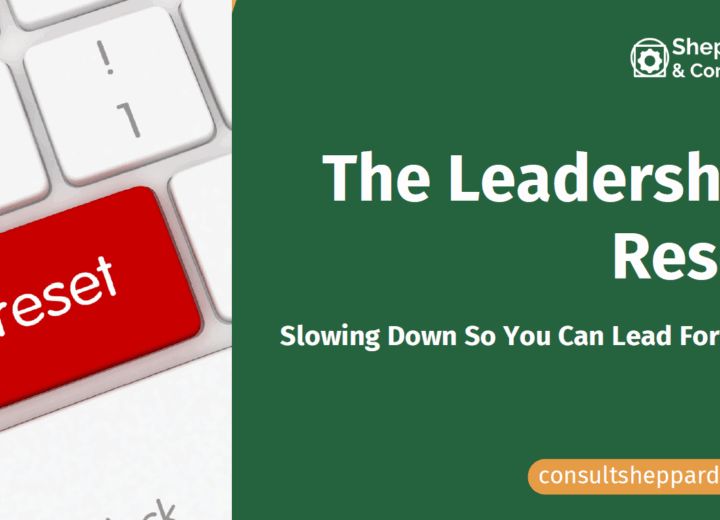
In January 2024, at the Associated Equipment Distributors annual summit conference in Las Vegas, I had the privilege to speak with a group of Canadian equipment dealers about raising the BAR in 2024.
B = Balance sheet. Are you increasing your equity in the business?
A = Absorption. Are you measuring it?
R = Retention. Both employee and customer. Has your dealership made the switch from order taker to order maker?
The purpose of this speech was to challenge dealers to think differently about the economic headwinds in front of them and see raising the BAR as an opportunity to improve their business.
Like you, most dealers recognized that the status quo heading into to 2024 wasn’t going to cut it. Sure, you had a great few years of rockstar sales during the pandemic, but reality was knocking. It was time to get back to the fundamentals of distribution: solving customer problems.
While this topic was uniquely positioned for dealers north of the border, the macroeconomic fundamentals are similar for those state-side (thus, the impetus to raise the BAR).
So, to help you step up your efforts, I thought it would be helpful to reflect on the forecast for 2024, the current situation as of July 2024, and some actions I’m seeing dealers take to raise their BAR to new heights.
But first, I’d like to share with you how I came up with the Raising the BAR theme for 2024. It was in late December 2023 that an article popped up on my Instagram feed: Canadian Masters Athlete of the Month. “Monica Pomietlarz…clearing of 1.35m bar in high jump…not only was this height a Canadian record…just shy of the World Record of 1.39m.” At 64 years old, Pomietlarz is competing at a level that puts her in the Top 100 female high jumpers in the US and Canada. Not only is she raising the bar and competing at a level that would challenge many collegiate athletes in their 20s, but she’s doing it at an age when most people are long since retired. Nearly 80% of Canadians aged 65 and older have almost zero physical activity and are classified as “inactive” (Healthy Aging: Publications Canada). Sadly, this stat parallels the organizational apathy that afflicts many dealers (80% are “inactive” in challenging themselves to improve their business).
My point is that it’s never too late to raise the bar, and only by challenging ourselves can we realize our full potential in life or business.
Let’s retrospect for a minute to the outlook as of January 2024. The macro outlook for Canada in 2024 wasn’t great. Low growth, flat interest rates, and high unemployment generally aren’t indicators to be excited about. To that list, we can add high dealer inventory levels and pressure on expense management, and to take the optimistic view, 2024 was shaping up to be a big opportunity for dealers to raise their BAR.
(Data sources: Bank of Canada, TD Economics, BDC, Federal Reserve)
| Macro view | Value | Trend |
| GDP Growth | 0.9% | Down |
| Inflation | 2-3% | Down |
| BoC interest rate | 5% | Down |
| Unemployment | 5.8% | Up |
| Probability of a recession | 50% | Up |
Fast forward to July 2024 and the outlook has improved if ever so slightly. Interest rates are down, growth is down but trending flat, and the likelihood of a recession is still at 50%. Anecdotally, I’ve heard from many dealers across the country that the equipment market was down in the first quarter though we’ve seen somewhat of a rebound in the 2nd.
| Macro view | Value | Trend |
| GDP Growth | 0.4% | Flat |
| Inflation | 2.7% | Flat |
| BoC interest rate | 4.75% | Down |
| Unemployment | 6.4% | Up |
| Probability of a recession | 50% | Flat |
Below are nine actions I recommended dealers take to raise their BAR heading into 2024.
My perspective on this hasn’t changed in the past six months. I’ve also listed a few other actions dealers are taking to drive improvements with their Balance sheet, Absorption, and Retention.
Balance Sheet:
- Use your floor plan(s). Re-read your dealer agreements and fully maximize the floor plan terms you have with your OEM.
- Earn your low-margin deals. If you’re going to sell a piece of equipment at a lower margin, earn it. Rather than simply cave on price, include customer value with the purchase (PM contract, extended warranty, machine inspections, etc.).
- Take your turn. Low inventory turns means high carrying costs. If you’re sitting on equipment waiting for the market to rebound, your cash burn will be dizzying. Ensure your sales professionals have all the possible purchase mechanisms at their disposal (buy, lease, rent, RPO) to help customers buy.
Absorption:
- Measure it. While not perfect, Absorption remains an indicator of overall dealer performance. Less than 60%, your pants are on fire, 70-80% you’re in the meat of the curve, and 90%+ you can consider yourself high performing.
- Manage bad expenses (deep dive). By now, you should have had all your department managers conduct a deep dive into expenses. Managing (reducing), not cutting, expenses by 10% should be more than doable.
- Add customer value (response time). I cringe when I write “customer value” because it’s such an overused sentiment, but it has a purpose here. Customer value is just that: doing things your customers value and are willing to pay for. You should dial in your quote turnaround time, shop and field response time, and customer call back/update speed.
Retention
- Learn how to sell again. I hate to say it, but most of the folks I’ve encountered in the dealership in the past 6 months have forgotten how to sell. Answering the phone and completing an order is not selling. Remember what it was like pre-pandemic to conduct discovery calls with customers to understand their needs truly? Sure you do. Share these experiences with your team.
- REALLY understand customer needs. Customer needs have changed. The shift toward leasing or short-term renting from buying is accelerating daily. The market for smaller utility equipment is growing. Are you up to date with the trends in your market? When did you last spend time in the field with one of your customers? Saddle up.
- Create customer value. Again, with the value statement, this is the first step in driving customer retention. If there’s no value, there’s no customer. Have you defined what makes your dealership unique and if your customers value that uniqueness? Maybe it’s time for an updated SWOT analysis.
Other improvements:
- Balance sheet. Assets don’t just mean whole goods; this is your entire asset base. Buildings, trucks, and parts inventory can all be assets. Liquid assets (cash) are particularly important during a downturn. Many of my dealer clients have implemented projects to sell old service trucks, clear out obsolete inventory, and lease or sell unused buildings or land.
- Absorption. Two words: technician productivity. If this is not at least 80%, you have a problem. Dealers like you are realizing success the past two quarters by measuring tech productivity, communicating it at least weekly, and incentivizing techs to improve it.
- Retention. Here’s where training your people pays dividends again and again. The more agile dealers I work with have invested heavily in leadership training and development for their executive and front-line manager teams. When your team is trained and your leaders know how to coach their people, employee retention improves, as does customer retention when your staff does a better job solving their customer’s problems. Training is the gift that keeps on giving.
So there you have it. You can and should raise the BAR for your dealership in 2024 and now’s a great time to do so. But you can’t do it all at once. Define and drive one specific action to improve your balance sheet, absorption, and retention through to the end of 2024. I’m excited for you to look back in 6 months on the BAR you raised and cleared!





